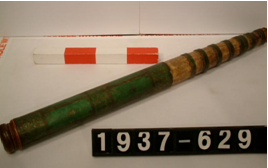- 1610: Galileo
- 1676: Ole Rømer
- 1687: Isaac Newton
- 1781: William Herschel
- 1838: Friedrich Bessel
- 1861: William and Margaret Huggins
- 1912: Henrietta Leavitt
- 1917 Einstein
- 1920: Harlow Shapley
- 1929 Edwin Hubble
- 1948: Ralph Alpher
- 1949: Fred Hoyle
- 1963: Maarten Schmidt
- 1964: Arno Penzias and Robert Wilson
- 1978: Vera Rubin and Kent Ford
- 1989: Margaret Geller and John Huchra
- 1992: John Mather and George Smoot
- 1995: Robert Williams
- 1998: Saul Perlmutter and Brian Schmidt
- 2010: Wendy Freedman
Paris Observatory
In 1671 Rømer worked at Uraniborg Observatory, near Copenhagen, where he began a collaboration with the famous astronomer Giovanni Domenico Cassini, who had just become director of a new observatory in Paris. The two astronomers carefully timed eclipses of Jupiter’s moons—the moment when a moon disappeared behind Jupiter. The purpose of the observations was to determine the distance between Uraniborg and Paris. By comparing the difference in time of an eclipse they were able to determine the distance between the sites. (By analogue, a person in New York City talking by phone to someone in San Franciso would find their watches disagreed by three hours, and could therefore infer that they live about 3/24ths of the way around the Earth—about 3,000 miles.)
 Cassini appreciated Rømer’s careful work and in 1672 invited him to Paris where he became Cassini’s assistant. Cassini also noticed that the length of time between eclipses of Jupiter’s moons tended to be shorter as Earth approached Jupiter and longer as Earth moved away from Jupiter, and initially thought it to be due to the changing distance that light had to traverse. However, he did not follow up this idea, and it was left to Rømer to work it out in detail.
Cassini appreciated Rømer’s careful work and in 1672 invited him to Paris where he became Cassini’s assistant. Cassini also noticed that the length of time between eclipses of Jupiter’s moons tended to be shorter as Earth approached Jupiter and longer as Earth moved away from Jupiter, and initially thought it to be due to the changing distance that light had to traverse. However, he did not follow up this idea, and it was left to Rømer to work it out in detail.
 |
| 17th century telescope by Italian optician Giuseppe Campani. Image by Kevin Johnson, Science Museum of London. |
Rømer probably did not use the extremely long-focus telescopes shown in the drawing of the Paris Observatory to observe the moons of Jupiter. Such telescopes were used to observe fine details, like the moons of Saturn that Cassini discovered a few years later. Instead he probably used some of the excellent smaller telescopes made by Giuseppe Campani mounted on a tripod for steady viewing during an eclipse of Jupiter’s moons.